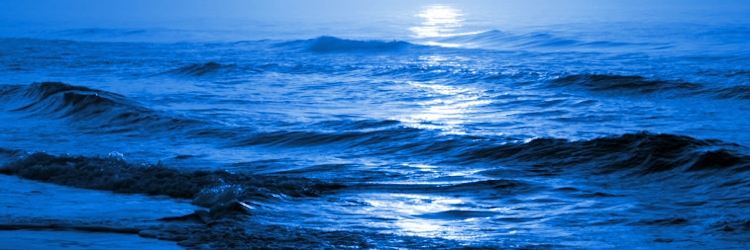Icebergs
The Tip of the Iceberg

Author
Laura Rose, Virginia Sea Grant, Virginia Institute of Marine Science
Grade Level
8-12
Lesson Time
45 min. - 1 hr.
Objectives
- Describe the process of calving.
- Illustrate the progress of drifting icebergs.
- Analyze the trajectory of calved icebergs.
Calving, Trajectory
Materials Required
map of Antarctica, pencil
Summary
Using data from the National Ice Center, track the trajectory of Antarctic icebergs. Introduction
Glaciers are the ice machines producing icebergs, churning away primarily in Greenland and Antarctica. A very small number of icebergs originate in Alaska and in Siberia or south of Franz Joseph Land in the Barents Sea. Since icebergs come from glaciers, they are composed of freshwater. Glaciers are formed by thousands of years of snowfall accumulation that is eventually compressed into ice. Winds, tides, and warming temperatures of spring weaken glacial masses, and great chunks of ice break off in a process known as "calving." The bergs are then at the mercy of the currents.
Icebergs are serious hazards in shipping lanes. At the time of the Titanic disaster, there were no systems in place to track icebergs and forewarn ship captains. Shortly afterwards, however, the International Ice Patrol was formed and assigned this important task. Another agency that tracks icebergs and provides sea ice data is the National Ice Center (NIC). In order for an iceberg to be worthy of tracking by the NIC, it has to meet two criteria: (1) it has to measure at least 10 nautical miles (nm) on its longest side; and (2) the iceberg sighting must have occurred within the last 30 calendar days. There are a couple exceptions to this policy, however: an iceberg will be carried even if not sighted for more than 30 days, when grounded or locked in fast ice. Also, when an iceberg's original size was 10 nm or greater before the iceberg split into two or more pieces, NIC will continue to track the iceberg until it breaks up below the resolution of satellite imagery.
Two icebergs, A38 and B10A, recently grabbed quite a bit of media attention. Iceberg B10A, measuring 24 by 48 miles, amazed scientists not because of its size but because it managed to get so far north without breaking up. Iceberg A38 was originally almost twice the size of B10A.
Data Activity
Scroll down past the first table to the "archive of all icebergs" link (Quadrants A-D) to download the data spreadsheet. For starters, open the data table for Quadrant A and track the path of A38 and its pieces A38A, A38B, and A38C , to see where these giants drifted. Data are also available for B10, B10A, and B10B (Quadrant B), but beware these tracks contain a very large number of data points.
-
Notes on data:
- Column A - iceberg name
- Column B - Julian date (i.e., "98286" is the 286th day of 1998)
- Column C - latitude
- Column D - longitude
- Column E - iceberg size (nm)
On your map, record the sighting date next to each data point, and record the size of the iceberg near each iceberg track. Then add the last sighting of each iceberg from the positions in the table. (Note that both icebergs have been dropped from the current position table). Click here to view a satellite image of A38 downloaded from the NIC (image © Canadian Space Agency, 1998).
When you've finished your tracking exercise, view the trajectory of the B10 bergs, as well as some astounding images.
Discussion Questions:
Give some reasons why the NIC may stop tracking an iceberg.
What processes could influence ice calving and iceberg formation and distribution?